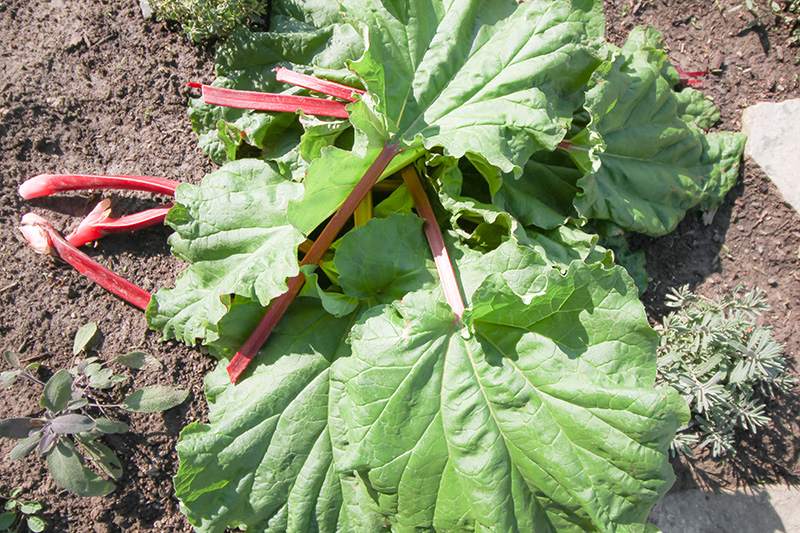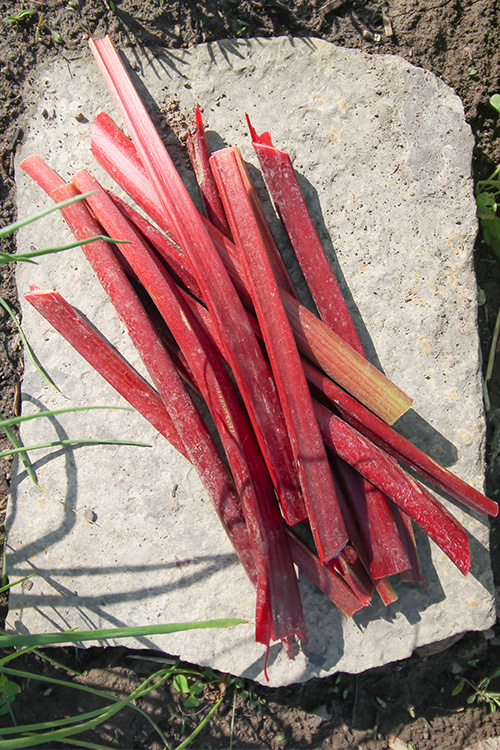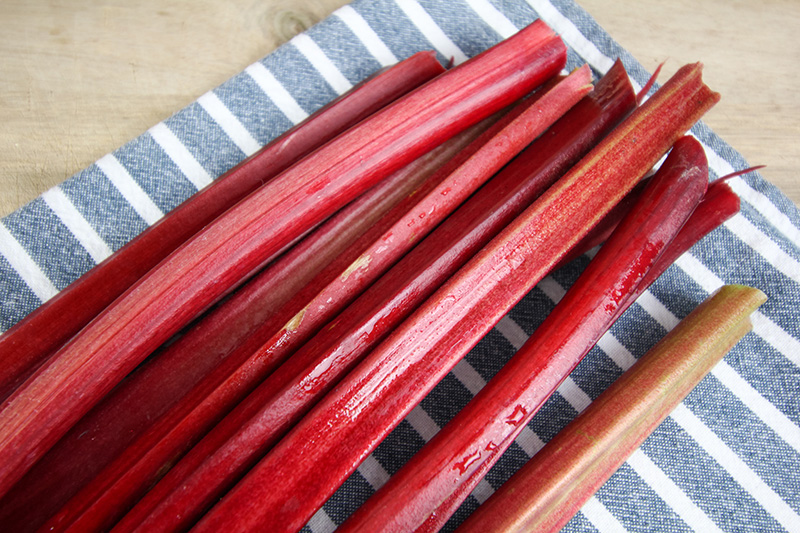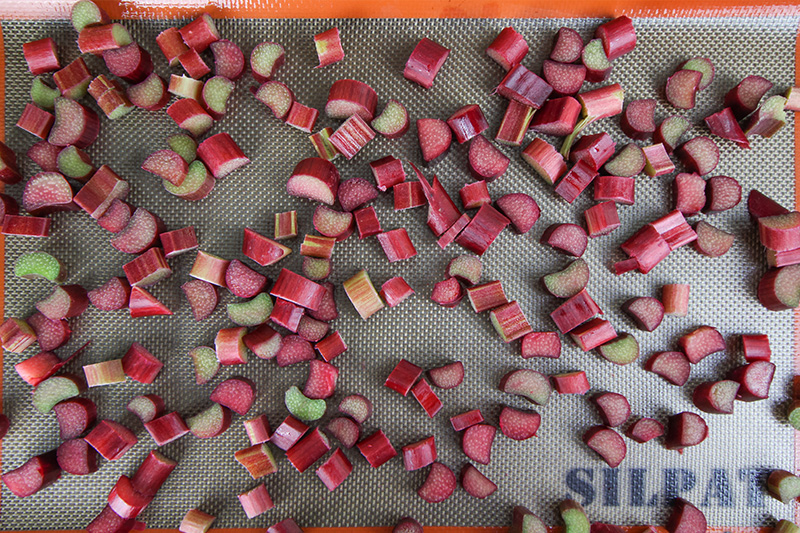If you have an abundance of rhubarb in your garden, but don’t think you’ll manage to use it all up during the rhubarb season, make sure you don’t let it go to waste! Here’s how to freeze rhubarb.

One of the things that I really want to work on getting better at this gardening season is using or saving the things that I grow in a more timely manner. Things always seem to get away from me near the end of the growing season and I’ll either miss an opportunity to harvest something at the right time, or I’ll harvest it, but not have a plan in place for what to do with it. Since rhubarb is kind of the first thing to be ready to harvest in the garden (well, other than the herbs), I thought this would be the perfect time to start developing good habits for the rest of the reason. I’ve already made a couple of rhubarb apple crisps this season, and some rhubarb sauce that went into some pretty delectable pie irons on the campfire over the May long weekend, but I thought it would be a great idea to freeze some of the extra rhubarb as well so we can really get the most out of our harvest this year. So here’s how to freeze rhubarb!
How to Freeze Rhubarb: Harvest and Prepare
If you can, it’s best to freeze rhubarb as soon as you harvest it. Rhubarb stalks can start to dry out and toughen up pretty quickly after they’re harvested, so getting them saved in peak condition will really help make your pies and muffin their tastiest when you go to use your rhubarb later in the year.
For a detailed explanation of how and when to harvest rhubarb go here: How to Know the Right Time to Harvest Rhubarb
Remove the leaves from the stalks and throw them straight into the compost pile.

Rinse your rhubarb stalks clean and you’re ready to start the freezing process!

Freezing Rhubarb
You may have heard of people peeling their rhubarb stalks before freezing them. The thought behind this is that the outer skins of the rhubarb stalks can look really tough when they come out of the freezer, and you of course want your rhubarb to soften up completely when you bake it. The good news is that peeling your rhubarb is totally unnecessary and any areas that look tough when they come out of the freezer will soften up once they’re cooked just like fresh rhubarb would, as long as you froze it when it was freshly-harvested, and didn’t let your rhubarb dry out too much before freezing.

All you need to do to freeze your rhubarb is chop it up into little pieces, about the size that you would want them to be for whatever recipe you’ll be using them in. I like to cut them into pieces about 1/2″ long usually.

Spread your rhubarb pieces out on baking sheets lined with either parchment paper or a non-stick baking mat. These mats are great because they work in the oven, but I just learned that they can also go in the freezer so they can really help cut down on the amount of waste that you create through all parts of the baking process. 🙂

Spreading your rhubarb out allows it to freeze more quickly and maintain a fresher flavour, but it also make it easier to measure out exactly how much you need for your future recipes without forcing you to thaw out a whole big clump of rhubarb chunks.
Once your rhubarb has completely frozen, transfer it to an airtight container and pop it back in the freezer!
Do you grow rhubarb in your garden? What rhubarb creations have you made this year?
MORE IDEAS LIKE THIS
- Homemade Rhubarb Bread
- How to Quickly Ripen and Avocado
- How to Soften Brown Sugar Quickly
- How to Harvest Basil for Strong, Healthy, Productive Plants
This post contains affiliate links.
Courtenay Hartford is the author of creeklinehouse.com, a blog based on her adventures renovating a 120-year-old farmhouse in rural Ontario, Canada. On her blog, Courtenay shares interior design tips based on her own farmhouse and her work as founder and stylist of the interior photography firm Art & Spaces. She also writes about her farmhouse garden, plant-based recipes, family travel, and homekeeping best practices. Courtenay is the author of the book The Cleaning Ninja and has been featured in numerous magazines including Country Sampler Farmhouse Style, Better Homes and Gardens, Parents Magazine, Real Simple, and Our Homes.
